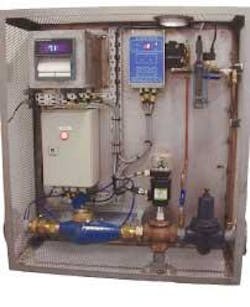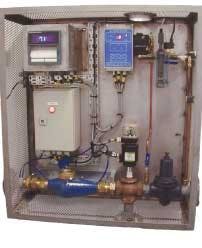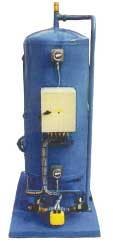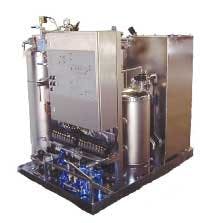Used mud treatment system reduces water content and cost
Failsafe discharge control
Slurry typically comprises 60% solids, 20% oil, and 20% water, but the water content can be as high as 90%. Marinfloc has found a way to remove the extra water, decreasing mud treatment costs.
Marinfloc's improved Slurry De-watering Unit (SDwU) tackles one of the main problems associated with used drilling mud, namely large amounts of dirty water. The water and drill cuttings particles adhere to the mud and won't settle out. Additionally, the shakers cannot remove the drill cuttings pieces because the particles are too large to fit through the fine mesh of the shakers.
null
Flocculants are added to the slurry, and the mud, oil, and water form layers. Some layers of water will be trapped within other layers of slurry. The SDwU constantly separates out the water.
The slurry is pumped into the separation tank, and a small amount of compressed air is added to the system. When the tank is full, the slurry will overflow. The lighter parts will rise to the top of the tank while the heavier parts settle to the bottom. When discharge begins, the heavier parts will drain to the sludge tank, where an oil-monitoring device checks the contents. Water is sent to the bilge water holding tank and oil to the sludge holding tank. The water is treated onboard and the rest is taken to shore for final treatment. Marinfloc President Benny Carl-son said contractors may pay up to NKr3 for each liter of mud sent to shore for processing. Just pulling out excess water reduces costs, he said.
Marinfloc has also begun using better demulsifiers in the process. The system can run continuously or in a semi-automatic mode. It has been installed on a number of shuttle tankers.
null
Discharge monitor
Marinfloc developed its White Box fail safe System (WBS) to monitor water prior to discharge into the sea. The unit ensures that water with an oil content exceeding 15 ppm cannot accidentally be pumped overboard.
During the first few minutes of rainfall onto the deck, the ratio of oil to water is quite high. Continued rainfall dilutes the concentration of oil in the water, sometimes to below the 15 ppm threshold, Carlson said. The WBS checks water from the deck to ensure it can be discharged without polluting the seawater. If the oil content is already below the threshold, the WBS signals that the water can be discharged without being treated.
"You therefore have total control all the time of what you're putting overboard," Carlson said.
The WBS can be installed on newbuilds or during upgrades.
It comprises an oil content meter, a three-way valve, a flow security system, a flow meter, and a recorder for ppm, time, valve position, GPS signal, and flow over board.
null
Bilge water cleaning
The company has also unveiled changes to its Marinfloc bilge water cleaning unit. The new version has a smaller footprint and a lower weight. It also can handle continuous flow, an improvement over the batch system the older model employed. The changes, Carlson said, will meet IMO regulations expected to go into effect on Jan. 1, 2005. Changes will likely include treating discharge water to 15 ppm or less of hydrocarbons, and mandatory inclusion of an oily water separator capable of handling emulsion. The Marinfloc unit has been able to deal with emulsion for the last decade, he said.
For more information, contact Benny Carlson, Marinfloc. Tel: +46 304 104 98; +fax: 46 304 100 51; [email protected], www.marinfloc.com.






